
Nymphaeaceae is a family of flowering plants, commonly called water lilies. They live as rhizomatous aquatic herbs in temperate and tropical climates around the world. The family contains five genera with about 70 known species. Water lilies are rooted in soil in bodies of water, with leaves and flowers floating on or rising from the surface. Leaves are oval and heart-shaped in Barclaya. Leaves are round, with a radial notch in Nymphaea and Nuphar, but fully circular in Victoria and Euryale.
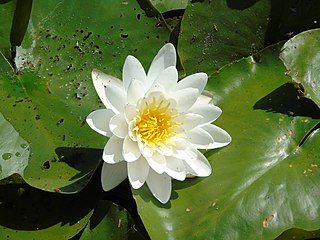
Nymphaea is a genus of hardy and tender aquatic plants in the family Nymphaeaceae. The genus has a cosmopolitan distribution. Many species are cultivated as ornamental plants, and many cultivars have been bred. Some taxa occur as introduced species where they are not native, and some are weeds. Plants of the genus are known commonly as water lilies, or waterlilies in the United Kingdom. The genus name is from the Greek νυμφαία, nymphaia and the Latin nymphaea, which means "water lily" and were inspired by the nymphs of Greek and Latin mythology.
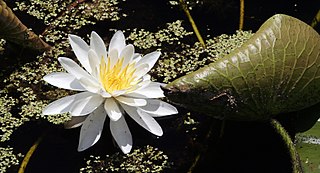
Nymphaea odorata subsp. tuberosa is a subspecies of Nymphaea odorata native to the region spanning from Central and Eastern Canada, extending to North Central and Northeastern United States.
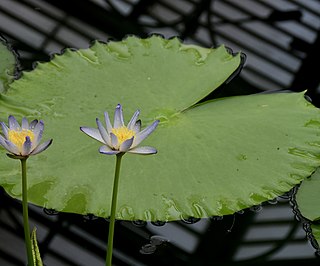
Nymphaea macrosperma is an emergent water plant native to northern Australia.
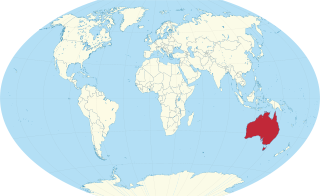
Nymphaea ondinea is a flowering aquatic plant in the family Nymphaeaceae native to northwestern Australia.

Euryale is a genus of flowering plants of the family Nymphaeaceae.
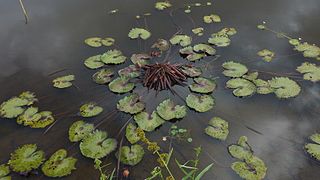
Nymphaea rudgeana is a species of waterlily native to the region spanning from Mexico to tropical South America.
Nymphaea conardii is a species of waterlily native to the region spanning from Southern Mexico to tropical South America.

Nymphaea atrans is a species of waterlily is endemic to Queensland, Australia.

Nymphaea vaporalis is a species of waterlily endemic to Queensland, Australia.

Nymphaea alexii is a species of waterlily endemic to Queensland, Australia.

Nymphaea carpentariae is a species of waterlily native to Queensland and Western Australia.

Nymphaea jacobsii is a species of waterlily endemic to Queensland, Australia.

Nymphaea kakaduensis is a species of waterlily endemic to the Northern Territory, Australia.

Nymphaea kimberleyensis is a species of waterlily endemic to Western Australia.

Nymphaea lukei is a species of waterlily endemic to Western Australia.

Nymphaea noelae is a species of water lily endemic to Queensland, Australia.

Nymphaea subg. Anecphya is a subgenus of the genus Nymphaea.

Nymphaea subg. Confluentes is a subgenus of the genus Nymphaea.
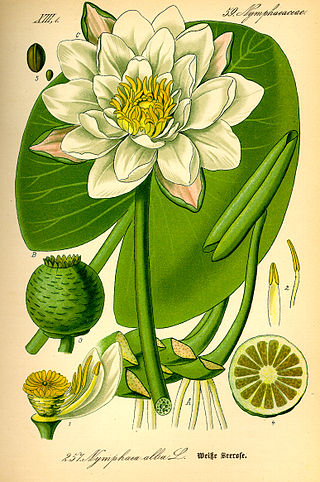
Nymphaea subg. Nymphaea is a subgenus of the genus Nymphaea.













